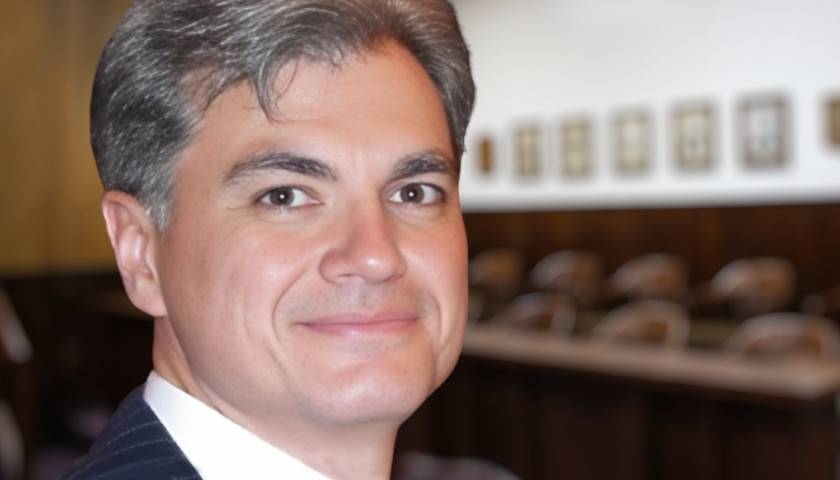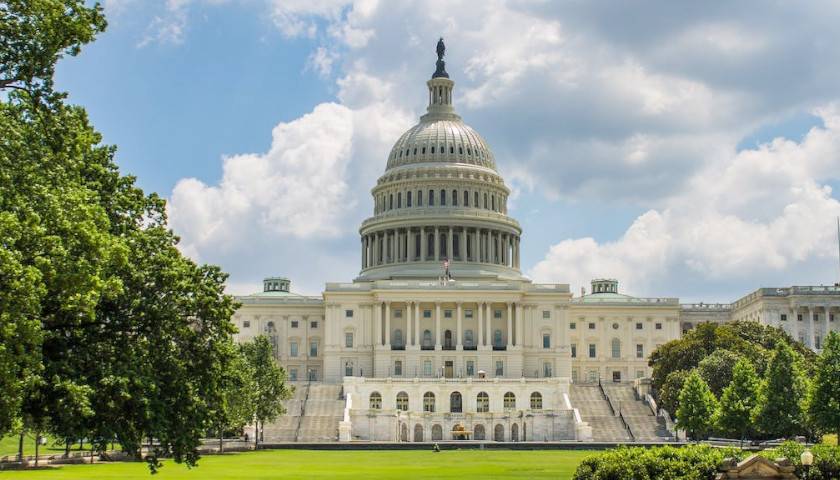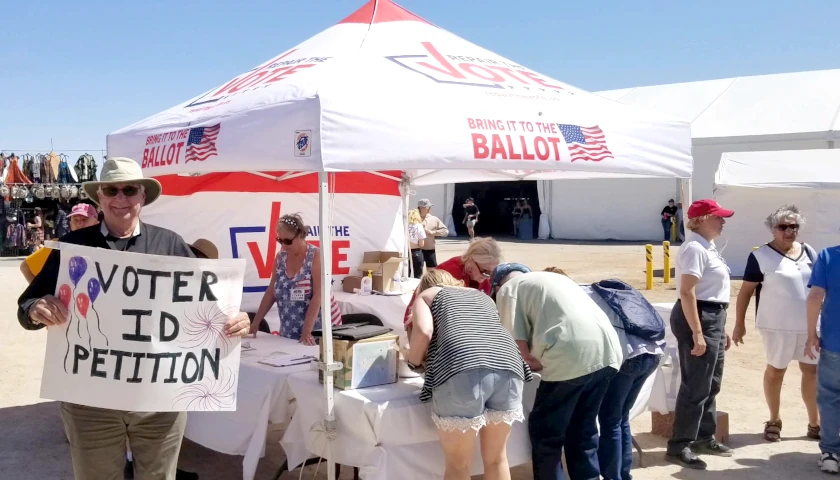A New York jury found former President Donald Trump guilty on all 34 criminal counts related to falsifying business records last week, prompting outcry that New York Judge Juan Merchan, who was handpicked to handle the case and who donated to Joe Biden, committed misconduct during the trial, including how he handled the jury instructions. A CNN senior legal analyst reported that the case was full of so many legal stretches that employees of Manhattan District Attorney Alvin Bragg’s office referred to it as the “zombie case.”
Daniel Street, an attorney in Louisiana who writes about lawfare, told The Tennessee Star the jury instructions were “terrible.”
“The judge literally MADE UP the ‘intent to defraud’ instruction,” he said. “That is not what the New York case law says. And the verdict form was trash too. No finding required for ANY of the underlying ‘crimes.’ None. Not one finding on the State law ‘unlawfully influencing the election’ . . . and NOT ONE finding on any of the three underlying ‘crimes’ the influencing the election charge was predicated on. Just unreal.”
Judges normally choose sections from standardized jury instructions, taking into account input from the attorneys on opposing sides. They can pick and choose which parts of the templates they use, and add specialized instructions of their own. Merchan used many sections from New York’s template for jury instructions that appeared to favor the prosecution, and added new sections of his own.
Greg Germain, a professor at Syracuse University College of Law in New York, told Newsweek that Merchan’s jury instructions were biased towards the prosecution. “The jury instructions are so favorable to the prosecution, and so unclear about what the jurors have to find to convict, that I expect they are very confused about what the case is about,” he said.
Advocate magazine explained — and even encouraged — biasing jury instructions to favor one party. “Effectively used, the terms and elements set forth in the instructions compel the jury to find in your favor, should the elements be satisfied with the facts and evidence you’ve presented,” an attorney argued in a 2020 article. He added, “[U]se of instructions to argue your case is sadly often overlooked.”
Similarly, an attorney writing at Pillsbury Law published an article entitled “Crafting Jury Instructions to Win Trials and Appeals.”
In an unusual twist taking advantage of an obscure New York Court of Appeals ruling, Merchan chose to withhold his 55-page jury instructions. Jurors were only allowed to hear them read aloud – an exercise that took an hour and 40 minutes to complete. The jurors asked to be read the instructions a second time during deliberations.
Most jury instructions aren’t that long. The jury instructions in the O.J. Simpson murder case took only 22 minutes to read.
Since the jurors weren’t allowed to have the written jury instructions, only hear them read, the two attorneys on the jury likely provided selective guidance to the others. Street told The Star, “Most states barred lawyers from serving on jurors until recent years for the very reason lawyers might sway juries with their opinions of what the law is rather than what the court instructs.”
Although there were 34 felony counts against Trump, they were all related to one incident, allegedly paying porn star Stormy Daniels $130,000 indirectly through a series of payments from his former attorney Michael Cohen, who served time in prison.
The most controversial part of the jury instructions was stating that the second crime in addition to the misdemeanor of falsification of business records could be any of a multiple number of crimes, and the jurors didn’t need to unanimously agree on which crime. Merchan said, “In determining whether the defendant conspired to promote or prevent the election of any person to a public office by unlawful means, you may consider the following: (1) violations of the Federal Election Campaign Act otherwise known as FECA; (2) the falsification of other business records; or (3) violation of tax laws.”
Trump was not charged with violating any tax laws.
Merchan’s jury instructions began with a lengthy section that appeared to be directed at the jurors’ view of porn star Stormy Daniels. It warned them not to be “influenced by a bias or prejudice in favor of or against a person who appeared in this trial,” and to “be mindful of any stereotypes or attitudes about people or about groups of people that the juror may have, and must not allow those stereotypes or attitudes to affect their verdict.”
He went on, “As I have explained, we all develop and hold unconscious views on many subjects. Some of those unconscious views may come from stereotypes and attitudes about people or groups of people that may impact on a person’s thinking and decision- making without that person even knowing it.” That section contained significantly more discussion lecturing against stereotyping, none of which appeared to be from standardized jury instructions. It included, “Justice requires no less.”
Another section expanded even more on the topic, encouraging jurors to discredit witnesses like this. “Did the witness show an ‘unconscious bias,’ that is, a bias that the witness may have even unknowingly acquired from stereotypes and attitudes about people or groups of people, and if so, did that unconscious bias impact that witness’s ability to be truthful and accurate.”
There was an extensive section on how jurors may infer facts even though they don’t see proof, giving an example of seeing people outside with raincoats and umbrellas but you’re not outside and cannot see the rain.
A section on redactions provided a stern warning on how the jurors must not speculate about what was redacted from exhibits. “Those redactions were made to remove personal identifying information and to ensure that only relevant admissible evidence was put before you,” Merchan said. “You may not speculate as to what material was redacted or why, and you may not draw any inference, favorable or unfavorable against either party, from the fact that certain material has been redacted.”
Another section emphasized that past negative court proceedings against witnesses should be deemphasized. Merchan ignored almost all of the criminal history of Cohen, including the fact he admitted that he gave perjured testimony to Congress and was convicted of that crime. A similar section on the credibility of the witnesses stated that even if they found the witnesses had lied, they could still “disregard so much of it as you find was untruthful, and accept so much of it as you find to have been truthful and accurate.”
Despite the fact Merchan said Cohen is considered an “accomplice” to Trump in committing crimes, Merchan only brought up Cohen pleading guilty to violating the Federal Election Campaign Act, which he said “was permitted to assist you, the jury, in assessing Mr. Cohen’s credibility as a witness and to help provide context for some of the events that followed.”
A separate section in the jury instructions stated, “You are not required to reject the testimony of a witness who has been convicted of a crime or has engaged in criminal conduct, or to accept the testimony of a witness who has not.”
Merchan said in order to find an accomplice credible, the jurors merely need to find “evidence that tends to connect the defendant with the commission of the crime charge.”
Regarding the prosecution’s witness David Pecker, who owned publications like the National Enquirer, Merchan only brought up Pecker’s “non-prosecution agreement with federal prosecutors, as well as a conciliation agreement with the Federal Election Commission.” He failed to bring up any other details related to Pecker’s credibility, such as the Manhattan DA’s investigation into him for allegedly blackmailing and extorting former Amazon CEO Jeff Bezos.
Numerous more sections addressed the credibility of witnesses, downplaying any dishonesty. One of them said, “There is no particular formula for evaluating the truthfulness and accuracy of another person’s statements or testimony.”
Another section said, “If there were inconsistencies by or among witnesses, you may consider whether they were significant inconsistencies related to important facts, or instead were the kind of minor inconsistencies that one might expect from multiple witnesses to the same event.”
The jury instructions used a couple of sentences from New York’s sample jury instructions that may not hold up if challenged on a constitutional basis. “The law recognizes that, in dealing with human affairs, there are very few things in this world that we know with absolute certainty,” the instructions said. “Therefore, the law does not require the People to prove a defendant guilty beyond all possible doubt.” Additionally, the instructions emphasized that the jurors not “be influenced in any way by bias, prejudice, sympathy.” This limited definition of reasonable doubt may have made it far easier to convict a defendant.
Merchan gave the jurors wiggle room allowing them to convict Trump even if they believed Cohen had committed most of the crime. “[Y]ou need not be unanimous on whether the defendant committed the crime personally, or by acting in concert with another, or both,” he said. This does not appear to be from standardized jury instructions, but something he made up.
The jury instructions only scantily covered what it means to find that Trump had “intent.” Instead, Merchan almost seemed to go out of his way to avoid it, for example in one part only generally stating that prosecutors “have the burden of proving beyond a reasonable doubt that the defendant acted with the state of mind required for the commission of the crime.”
The section that went over intent came from an “Expanded Charge on Intent” in New York’s standardized jury instructions, described to be added “as necessary.” Merchan did not need to add it. It said in part, which arguably made it easier to convict, “Intent does not require premeditation. In other words, intent does not require advance planning. Nor is it necessary that the intent be in a person’s mind for any particular period of time.” Clearly, judges who wanted to ensure that a defendant was more likely to be convicted could add this additional part.
That part was repeated a second time in the jury instructions.
Another part about intent said it wasn’t even necessary to link intent to a specific crime. That also doesn’t appear to have come from any standardized jury instructions. It said prosecutors “need not prove that the defendant acted with the intent to defraud any particular person or entity. A general intent to defraud any person or entity suffices. Intent to defraud is also not constricted to an intent to deprive another of property or money and can extend beyond economic concerns.”
In regards to the felony prosecutors were trying to attach to the misdemeanor of falsifying records, in order to stretch it out of the expired statute of limitations, Merchan said in the jury instructions that prosecutors thought it was New York Election Law section 17-152, “intend[ing] to commit, aid, or conceal” a “conspir[acy] to promote or prevent the election of any person to a public office by unlawful means.”
There was plenty of language added there that made it easier to convict, such as “although the People must prove an intent to commit another crime or to aid or conceal the commission thereof, they need not prove that the other crime was in fact committed, aided, or concealed.”
Fox News settled a defamation lawsuit from Dominion Voting Systems for $787.5 million due to how unfavorable the jury instructions would be if the case went to trial. Dominion asserted that several people made defamatory statements on air about the company and election fraud, including Rudy Giuliani, Sidney Powell and Lou Dobbs.
In Judge Eric M. Davis’s ruling on the parties’ motions for summary judgment, he indicated that he was going to instruct the jury that they must consider those statements to be false. “The evidence developed in this civil proceeding,” he said, “demonstrates that it “is CRYSTAL clear that none of the statements relating to Dominion about the 2020 election are true.”
The Trump jurors never revealed what the second crime was that they found Trump guilty of, nor did Merchan ask them. Legal expert Jonathan Turley, a Democrat, said there are “multiple layers of reversible error,” and called the conviction “short-lived” in an article for The Hill.
– – –
Rachel Alexander is a reporter at The Arizona Sun Times, The Tennessee Star, and The Star News Network. Follow Rachel on Twitter / X. Email tips to [email protected].
Photo “Judge Juan Merchan” by Juan Merchan.




